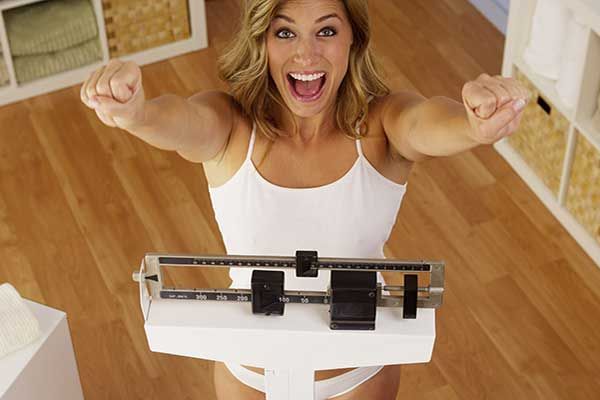


My home scale stopped working, and that is a good thing for me. I have a bad habit of deciding how to eat based on the number on my scale. If I am at the low end of my target weight, I tend to overeat. Hey, if I am at my skinny weight, I deserve it, right? Too bad that same thought pattern doesn’t work when I am at my high weight—I just get mad at myself. For me, weighing myself every 2 weeks is a good balance. That way I can make sure I don’t get too off target, but I am able to make eating choices based on what is overall good for my body and not some number. All of us have different reactions to our daily weight. I can show you data to support weighing yourself daily is good for you and other data that shows the exact opposite. Before you get on your scale in the morning, as so many of us have made a ritual, I challenge you to think about what getting on the scale means for you and your day ahead.
As a weight-loss physician, I get a lot of questions about what weight measurements are important and how to interpret them. My office scale is an InBody 270 composition analyzer. This scale sends a small current from your feet to your hands and is able to measure not only weight but your skeletal muscle mass, your body fat percentage, and several other parameters. I use these measurements along with your BMI to help determine your overall picture and come up with a weight-loss plan.
Every time I think about body mass index (BMI), John Cena comes to mind. His BMI is around 33, which puts him in the morbidly obese catogory. Clearly he is not obese and probably has a body fat percentage of around 6%. This highlights the limitations of using BMI alone as a body measurement. BMI is a measurement that takes into account your height and weight. This number is an important number when discussing risks of cardiovascular disease. There is a much lower rate of heart attacks and strokes in those with a BMI below 25 than above 25. It also highlights how weight alone misses part of the puzzle. One hundred fifty pounds is something very different in someone who is 5 feet tall versus someone who is 5 feet 6 inches tall.
I also track body fat percentage in my patients. The goal body fat percentage in women is between 18 to 28 percent and in a man is from 10 to 20 percent. At the beginning of your weight-loss journey we will note the number but not focus on it until later in your journey. As you start to lose weight and we get closer to your goal weight, we will switch the focus to looking at your body fat and working to reduce that. This usually involves adding an exercise program. After all, we didn’t do all this work to make you a skinny fat person. A skinny fat person is someone who on the outside looks to be thin, but inside they have too much visceral fat, the fat surrounding their organs, and still remain unhealthy.
Skeletal muscle mass and body fat percent go hand in hand. We want to make sure that you are not losing muscle on your weight-loss journey. This is very important, especially for my female patients. As we age, our hormones start to work against us and we want to make sure we are protecting our bones with strong muscles. Strength training exercises such as Pilates, yoga, and weight lifting will help with this parameter.
As you can see, there is much more to you than just your weight. We want to focus on all aspects of your body. I want you to have a smoking-hot body but also one that is healthy and will help protect you from disease. You got this! Let’s get started on your weight-loss journey.